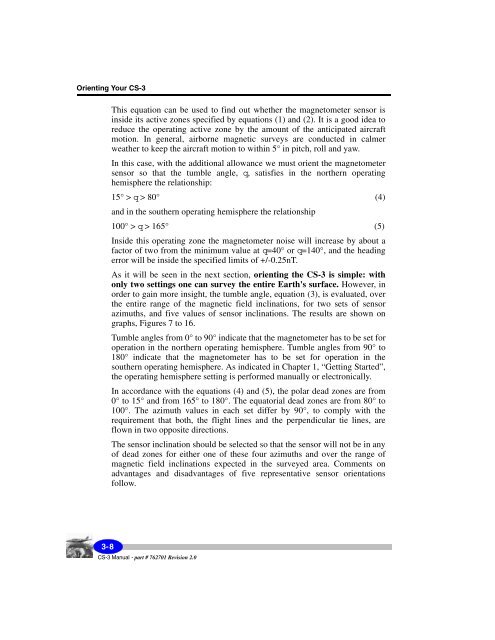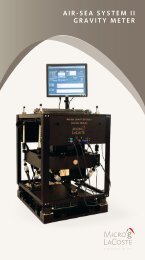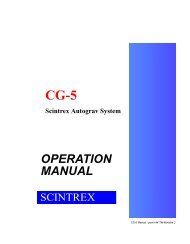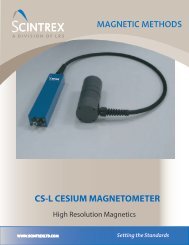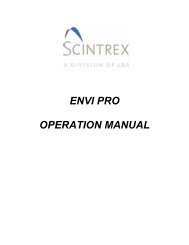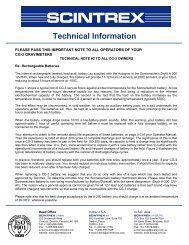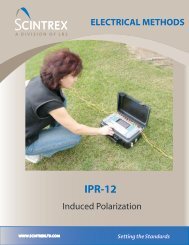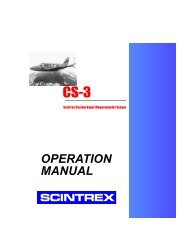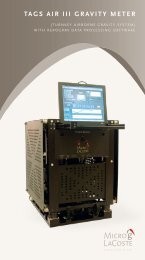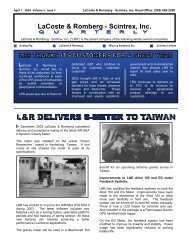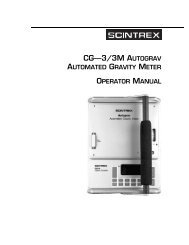OPERATION MANUAL - Scintrex
OPERATION MANUAL - Scintrex
OPERATION MANUAL - Scintrex
Create successful ePaper yourself
Turn your PDF publications into a flip-book with our unique Google optimized e-Paper software.
Orienting Your CS-3This equation can be used to find out whether the magnetometer sensor isinside its active zones specified by equations (1) and (2). It is a good idea toreduce the operating active zone by the amount of the anticipated aircraftmotion. In general, airborne magnetic surveys are conducted in calmerweather to keep the aircraft motion to within 5° in pitch, roll and yaw.In this case, with the additional allowance we must orient the magnetometersensor so that the tumble angle, q, satisfies in the northern operatinghemisphere the relationship:15° > q > 80° (4)and in the southern operating hemisphere the relationship100° > q > 165° (5)Inside this operating zone the magnetometer noise will increase by about afactor of two from the minimum value at q=40° or q=140°, and the headingerror will be inside the specified limits of +/-0.25nT.As it will be seen in the next section, orienting the CS-3 is simple: withonly two settings one can survey the entire Earth's surface. However, inorder to gain more insight, the tumble angle, equation (3), is evaluated, overthe entire range of the magnetic field inclinations, for two sets of sensorazimuths, and five values of sensor inclinations. The results are shown ongraphs, Figures 7 to 16.Tumble angles from 0° to 90° indicate that the magnetometer has to be set foroperation in the northern operating hemisphere. Tumble angles from 90° to180° indicate that the magnetometer has to be set for operation in thesouthern operating hemisphere. As indicated in Chapter 1, “Getting Started”,the operating hemisphere setting is performed manually or electronically.In accordance with the equations (4) and (5), the polar dead zones are from0° to 15° and from 165° to 180°. The equatorial dead zones are from 80° to100°. The azimuth values in each set differ by 90°, to comply with therequirement that both, the flight lines and the perpendicular tie lines, areflown in two opposite directions.The sensor inclination should be selected so that the sensor will not be in anyof dead zones for either one of these four azimuths and over the range ofmagnetic field inclinations expected in the surveyed area. Comments onadvantages and disadvantages of five representative sensor orientationsfollow.3-8CS-3 Manual - part # 762701 Revision 2.0


